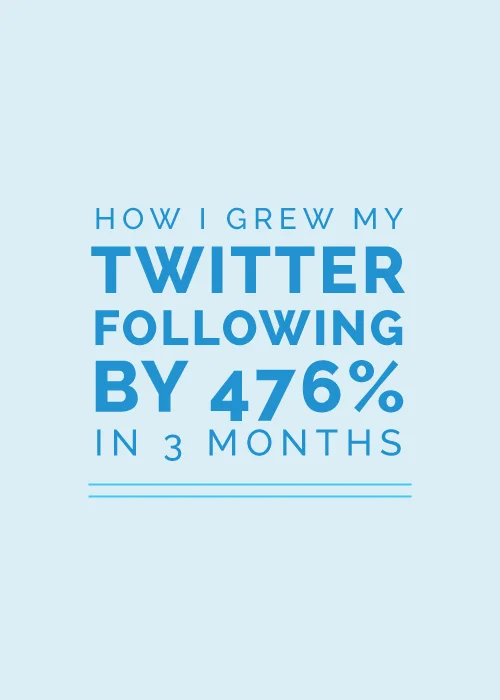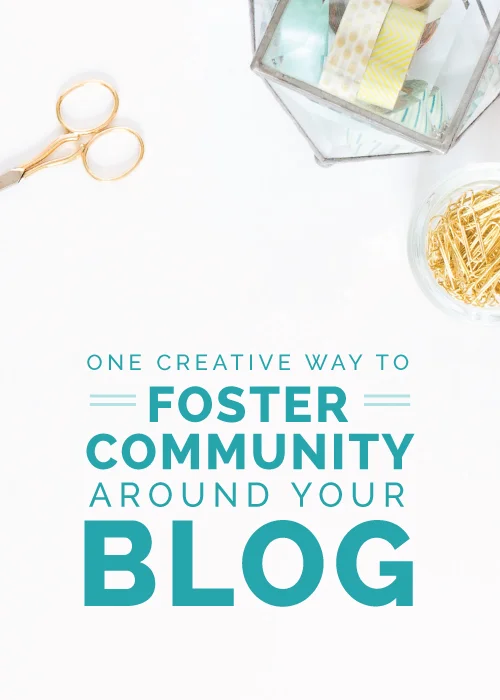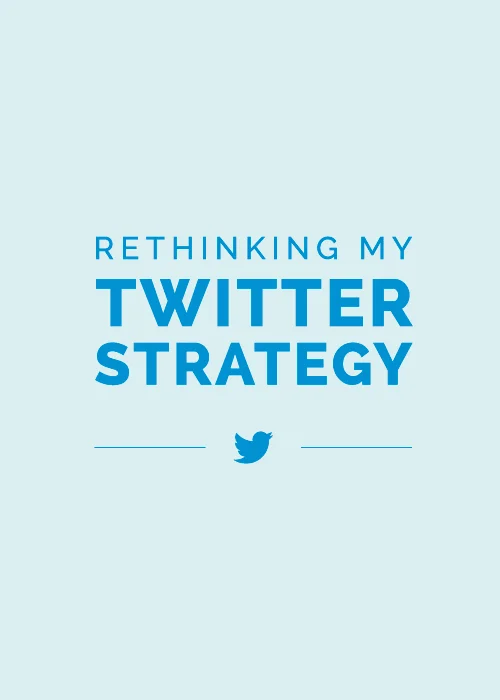As a blogger and business owner, I strive to be strategic and purposeful with my social media accounts. I have a slightly different audience on each account, which means that my approach to each one is slightly different. On Instagram, my audience is a wide mix of blog followers, design admirers, and friends and family, and as a result, it’s my most personal account. I share a variety of behind-the-scenes looks at my day to day, new projects, and occasionally a photo or two of my fur-child, Heidi. My audience on Facebook is slightly less varied and consists mainly of bloggers and business owners. I primarily share blog posts and announcements with the occasional quote, feature, or #ellechat reminder.
But until a few months ago, I didn’t have a strategy - and as a result, an audience - for Twitter other than pressing that “Share on Twitter” option within Instagram. I didn’t understand Twitter, and I definitely didn’t comprehend what an excellent opportunity I was missing out on to reach other creative entrepreneurs and bloggers. So I came up with a plan, and I shared it on the blog for accountability (and a hope that I might encourage others to get on board with Twitter, too).
It’s been 3 months, and I’m checking back in with a look at how this new strategy has panned out and paid off.
Goal 1: Share helpful articles and resources
One of the best advantages of using Twitter for business is the ability to quickly and succinctly link to information. The Elle & Company audience is made up primarily of creative entrepreneurs and bloggers, and in order to be a continued resource, one of my goals for Twitter has been to share helpful articles that would benefit them. While I’ve been consistent in sharing Elle & Company posts on a daily basis, I haven’t been as consistent with sharing posts from other sites. That’s a continued goal of mine; not only to benefit my audience and give shout outs to other bloggers, but to continue learning and doing my research for my own business as well.
Takeaway: While blogging is a great way to demonstrate your expertise in your industry, Twitter and other social media outlets can validate your credentials, too. By sharing relevant articles, facts, and quotes that would benefit and educate your audience, you have the opportunity to position yourself as an expert. Not only that, but when what you’re sharing is relevant and helpful for your audience, they’re more likely to retweet it and share it with their audience, too.
Goal 2 : Start conversations
Twitter is also a great conversation starter. It’s allowed me to easily connect with blog readers, industry peers, and other creatives, and it’s been a quick way to ask and answer questions.
I’ve started conversations primarily through my Thursday night Twitter chats, and I’ve been blown away by the number of creative entrepreneurs and bloggers who tune in each week to discuss topics like Pricing Your Services, Utilizing Pinterest for Business, and Fine-Tuning Your Client Experience. I was a little clueless to how Twitter chats functioned when I first started the #ellechat, and I wasn’t expecting a community to be formed around a simple hashtag. The hour is full of conversation, networking, and sharing between all the participants, and I’m only there to initiate it all with simple questions. While I chip in with answers and insights throughout the chat, I have the best time sitting back and watching all of the interaction take place. It’s amazing how much you’re able to share within the limits of 140 characters!
Takeaway: There are many ways to start conversations on Twitter. Do you have a quick question for someone in your industry that could be answered succinctly in a tweet? Ask them on Twitter! Not only will you keep them from having to answer yet another email, but chances are that your question might benefit more of their followers as well! You can also jump in conversations within a Twitter chat or start one of your own (learn more about Twitter chats in this post).
Goal 3: Post photos
While one of the advantages of Twitter is that it doesn’t take as much effort as Instagram (you don’t have to come up with an image each time you want to share something), photos and images take up more space within someone’s Twitter feed. And the more noticeable a tweet is, the more likely that your audience will pay attention to it. Each morning when I share my blog post on Twitter, I make sure to include a catchy sentence, the post title, a link to the post, and an image. I also create images for each #ellechat question so that they draw attention and catch the eye of participants (and if the participants retweet the questions, the images have a greater likelihood of catching the attention of their followers).
Takeaway: It might be helpful to create some templates for quotes, statistics, blog post titles, etc. so that you have images to include in your posts on Twitter. Not only will this draw more attention to your tweets, but it’s also an opportunity to streamline your visual brand and make your business more recognizable among your audience.
Goal 4: Follow the 90/10 rule
I’ve learned that this isn’t as straightforward for tweeting as it is for blogging. Because I’m often sharing my blog posts on Twitter, those tweets fall in an odd category of half Elle & Company promotion/half helpful for my audience. While I think the 90/10 rule is a fantastic guideline for blogging, I’ve learned to approach it differently on Twitter by focusing on the right mindset. I want my Twitter feed to be informative, beneficial, and positive (very much like what I want Elle & Company to be like in general), so I measure each tweet against those qualities.
Takeaway: If you’re using Twitter for your blog or business, it’s important to consider how your audience is benefiting from each tweet, whether it’s through education, insight, or entertainment. When it’s all about you it gets boring, but followers will engage with your tweets and share them with others if they get something out your tweets for themselves.
So how have these goals helped grow my audience and expand my reach on Twitter? Here a look at some statistics:
December 2014 (before I started this new strategy)
Tweets: 96
Tweet impressions: 11.9k
Profile visits: 1,208
Mentions: 61
New followers: 77
January 2015
Tweets: 215
Tweet impressions: 55k
Profile visits: 5,064
Mentions: 433
New followers: 281
February 2015
Tweets: 260
Tweet impressions: 117k
Profile visits: 8,705
Mentions: 1,186
New followers: 430
March 2015
Tweets: 285
Tweet impressions: 138k
Profile visits: 9,082
Mentions: 1,068
New followers: 391
There was a big jump in my Twitter statistics between December and January, which is when we started implementing the new strategy and set goals for the platform. And while we’re pleased with the continued growth month after month, we have one more goal to add to the list...
P.S. To take a look at your Twitter analytics, click here.
New Goal: Tweet 5-8 times per day
That may seem like a crazy number of tweets, but Twitter is a fast-paced social media platform. Each tweet has a lifespan of about an hour before it gets buried underneath new posts, so the chances of your followers seeing every tweet in their newsfeed is slim to none. I’ve learned that it’s important to tweet several times each day in order to be seen by your audience. Right now I do well to post 3-4 times per day, but I’m trying to up my game. I might need to bring on the help of a scheduling tool like HootSuite to make it easier on myself (and I would love to hear your suggestions on options, if you have any!).
All in all, the main goal for any social media strategy should be consistency. If you come up with a plan and stay diligent in carrying it out, you're sure to see positive results. And while numbers aren't everything, having a larger audience allows you to reach more people, book more clients, and generate more sales for your business. It's good to set goals and make plans, especially for free marketing opportunities on social media!
How do you utilize Twitter for blogging and business? What strategies have you found helpful for growing your following?











